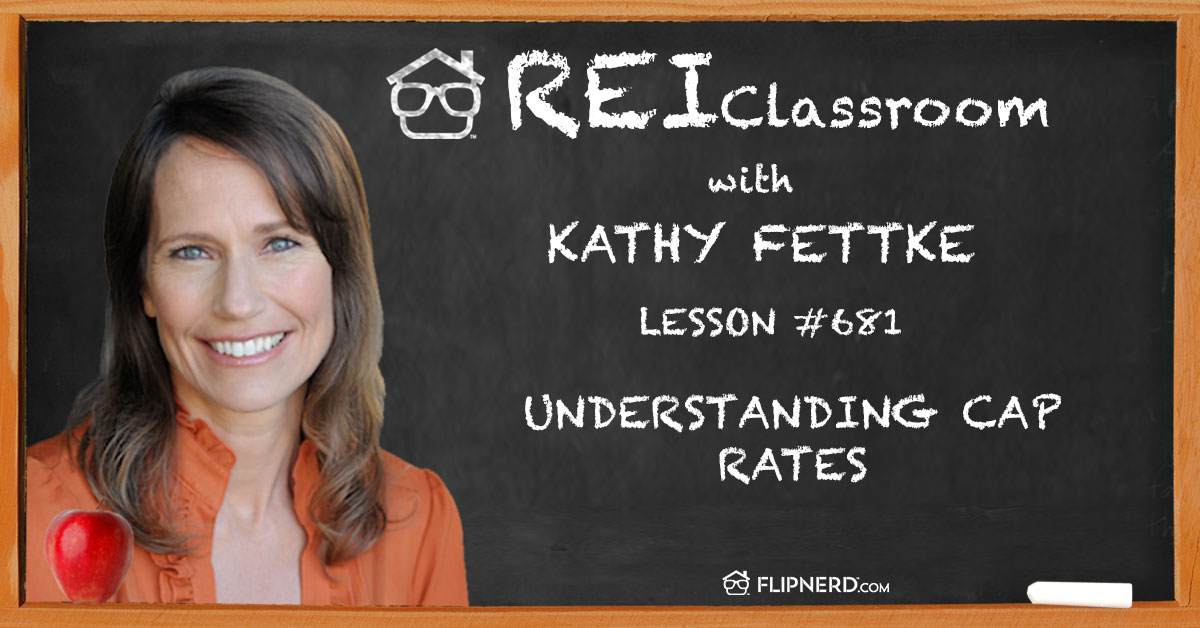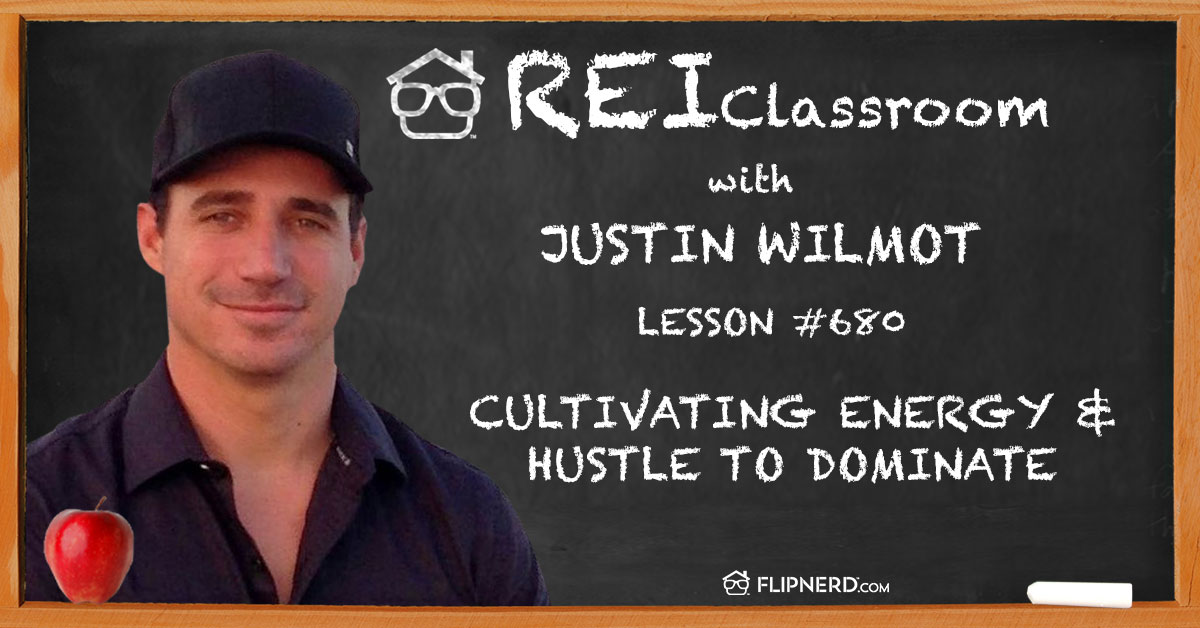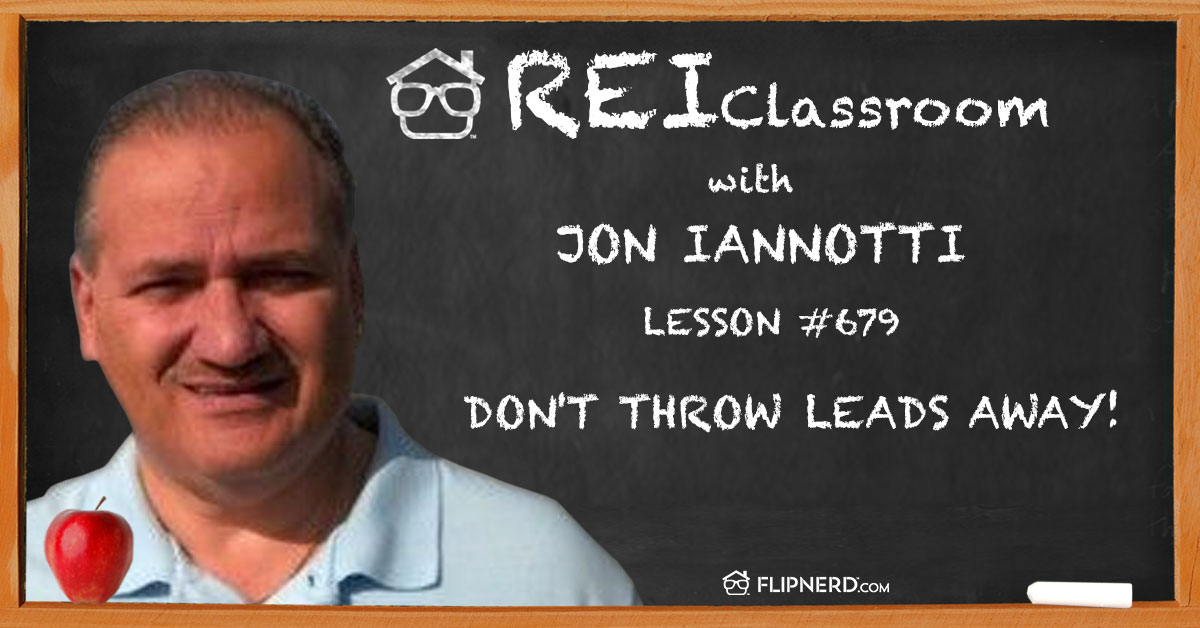Today’s REI Classroom Lesson
Gene Guarino discusses what to look for when finding the right property to use for Residential Assisted Living.
REI Classroom Summary
When searching for the right property, certain factors such as being near a busy road or on a corner can be beneficial for residential assisted living. Wide doors, smooth floors, and an open layout also make it easier to transition.
Listen to this REI Classroom Lesson
Real Estate Investing Classroom Show Transcripts:
Mike: Welcome back to the FlipNerd.com REI Classroom where experts from across the real estate investment industry teach you quick lessons to take your business to the next level. And now, let’s meet today’s expert host.
Gene: Hello. This is Gene from the Residential Assisted Living Academy. We’re going to be talking about how to find that hidden gem, that white elephant that others pass on, and how to turn it into a cash flow machine.
Mike: This REI Classroom real estate lesson is sponsored by UglyOpportunities.com.
Gene: What we’re going to talk about is those properties that you passed on before, that you saw and said, “It’s just not right for what I’m doing.” I’m going to show you how to look at it differently and give you a list of here’s what to look for if you want to do the residential assisted-living home.
Number one. Have you ever found a home that was really big but there were so many bedrooms that you didn’t know what to do? Or there were grab bars in the bathrooms and you said, “Wow. This is weird.” Or maybe somebody took out all of the bathtubs and put in a roll-in, or there’s no transition between the floor and the bathtub. You said to yourself, “This house is going to need tremendous renovation.” Maybe they even converted the garage into the bedrooms and now you walked away from this.
Here’s the reality. That right there probably was or could be an assisted-living care home. Those are the types of renovations that we’ll do to a home. If you passed on it, you passed on an absolute gold mine. So I’m going to give a checklist of things you should look for in these properties.
So number one, when you’re looking for these properties, I’m looking for a well-located property. Location is the key. Absolutely. The location that I’m looking for, though, may be a little different than what you’re thinking. It’s all about the demographics and the geographics.
When I say demographics, my client for this type of business, if you’ve listened to my previous sessions, is the care that is given to that senior resident. But they’re the ones who are in the bedroom. They’re the resident in the home, but really your client is the family. The family, the kids who are 50 or 60 years old, they’re the ones that are paying for and taking care of Mom and Dad financially. So the residents that are in the home are one thing. It’s the client. So where do they live? Where do the 50- or 60-year-old people with significant incomes that are getting toward the end of their working years, where do they live? Those are the residents.
So now demographics, we’ve talked about money, but age we talked about as well. In addition to that population, I don’t want to be in a home that is an hour outside of town. You want to be in a well-populated area where people have good money. My class, what I teach is the whole concept of a pyramid. Level one, on the bottom, everyone can afford. Level five, on the top, very few can afford. The sweet spot is level three and four. That’s what we’re looking for, upper-middle-class neighborhood, people that can afford it.
Once I found that demographically and geographically the location, the next step in zoning. Can I do it in this location? So here’s the secret, number one, because of the Fair Housing Act federally, you can do the residential assisted-living in any home, in any town, even with a homeowner’s association. Having said that, states, cities, towns, communities have put up certain rules. I’d rather not have to fight the battle. Just go to a home where there is no homeowner’s association, where the city is welcoming you. “Here’s the rules. Here’s what you do.” So they’re all over the country. Don’t let somebody say that you can’t. “If they’ve never done it, they never will.” I’ve done it, and I know you can, too.
So I’m looking for a home that is in a well-located area based on the demographics and geographics. Then I’m looking for a place where I can do this easily, meaning no homeowner’s association. That’s a good one.
Next, the home that you might have passed on because it was on the busy corner, or maybe it backed up to the K-Marts, or there was a small backyard and not enough room for the kids to play, or it was just kind of loud and noisy on a busy street. Guess what? That’s perfect for a residential assisted-living facility.
So where many people have passed up the home, it’s been on the market for 100 days, or 200 days, or a full year, that could be the reason. Homeowners are looking at it saying, “I don’t want to be on the busy corner.” For residential assisted living, that means convenience, easy for the family to find. They can park on the street. It’s all good.
Next, square footage, I can convert the square footage of the house into just about anything I just about want. So the bigger, the better. Three thousand square feet and above is what I look for. There are people all over the country doing this with 1500 square feet, but bigger is better.
Next, bathrooms, more is better. If I’ve got two bathrooms, it’s adequate. Legally, I can do that. I can have 10 to 12 residents in that home with just two bathrooms. But the reality is more is better. So when I’m looking at that home itself, I’m looking for the opportunity to add bathrooms, half-baths, turning a large bath into two smaller baths, or just adding a half-bath by getting into the concrete and so on.
So some of the rooms we’ve had, we’ve started with four-bedroom/, two-bath and now they’re nine or ten bedrooms and six, seven, eight, nine, ten baths. So bathrooms.
Next is floors and doors. So for the doors, wide. For the floors, smooth, hard surfaces. Not looking for carpet. I’d rather have tile, hardwood, linoleum, that type of thing. Easier for walkers and rollers, doesn’t drag on the feet. Doors, the wider the better. Don’t need commercial 42-inch, but a normal, large door from Home Depot, or Lowes 36-inch, that’s what we’re looking for. So one of the first things I’ll do is can I widen the doorways. You don’t have to, but it makes it a lot easier. Then the floors, I’m going to take out the carpets and put in hard floors.
Then, the next thing we’re looking for after the doors and the floors is when you look up, is this home something we can easily turn into an assisted-living, and I guess what I mean is really the flow of the home. Some of the homes you walk into and it just feels weird. It’s all choppy and cut up, and not very convenient. Others you walk into and you just feel welcome right off the bat. You walk in and it’s an open floor plan. The open floor plan is a whole lot better.
Ramps to the doors, you’re going to maybe put in some of those. If there’s a sunken family room, you might want to fill that in. You’ll need a ramp to bring that up. So thinking about that, the floors, the doors, the ramps. In most cities, if you have a certain number of people, it could be six, could be 10, you’re going to need to have a sprinkler system or fire suppression. Don’t let that scare you. For $15,000 you get it installed, and now you can generate $10,000 to $15,000 a month in net profit. That’s what I walk you through.
So let’s review. Busy is good. Backing up to commercial, not bad. I want to be in the right demographic and geographic area. I’m looking for a large amount of square footage. Can I convert the garage into living space? Can I even put an addition on? In addition to that, the number of bedrooms is important, but I can convert a dining room into a bedroom if I need to. It’s the number of bathrooms. Bathrooms are a lot harder to do. So bathrooms. More is better, but we can expand and add to it.
In addition to that, the wide doors, the smooth floors, those are all elements to look for. If you’d like to get a checklist, just let me know and we’ll make that happen. I appreciate you listening to me today about residential assisted living. Thank you.
Mike: HomeVestors, the we-buy-ugly-houses folks, is a franchise system of hundreds of real estate investors that have purchased over 65,000 houses. If you’d like to learn more about the most powerful real estate investment system in existence, whether you’re a pro looking to take your business to the next level, or whether you have no experience at all but a burning passion to be successful in real estate investing, please visit FlipNerd.com/ugly to learn more.
Please note the views and opinions expressed by the individuals in this program do not necessarily reflect those of FlipNerd.com or any of its partners, advertisers or affiliates. Please consult professionals before making any investment or tax decisions, as real estate investing can be risky.
Are you a member yet of FlipNerd.com, the hottest real estate investing social community online? If not, you can join for free in less than 30 seconds and get access to hundreds of off-market deals, vendors in your market to help you in your business, and you can start networking with thousands of other investors just like you. Get your free account now at Flipnerd.com.
Please check out the FlipNerd family of investing shows, where we host four great ongoing shows at FlipNerd.com/shows, or simply search for FlipNerd in the iTunes store.
Gene: Hello. This is Gene from the Residential Assisted Living Academy. We’re going to be talking about how to find that hidden gem, that white elephant that others pass on, and how to turn it into a cash flow machine.
Mike: This REI Classroom real estate lesson is sponsored by UglyOpportunities.com.
Gene: What we’re going to talk about is those properties that you passed on before, that you saw and said, “It’s just not right for what I’m doing.” I’m going to show you how to look at it differently and give you a list of here’s what to look for if you want to do the residential assisted-living home.
Number one. Have you ever found a home that was really big but there were so many bedrooms that you didn’t know what to do? Or there were grab bars in the bathrooms and you said, “Wow. This is weird.” Or maybe somebody took out all of the bathtubs and put in a roll-in, or there’s no transition between the floor and the bathtub. You said to yourself, “This house is going to need tremendous renovation.” Maybe they even converted the garage into the bedrooms and now you walked away from this.
Here’s the reality. That right there probably was or could be an assisted-living care home. Those are the types of renovations that we’ll do to a home. If you passed on it, you passed on an absolute gold mine. So I’m going to give a checklist of things you should look for in these properties.
So number one, when you’re looking for these properties, I’m looking for a well-located property. Location is the key. Absolutely. The location that I’m looking for, though, may be a little different than what you’re thinking. It’s all about the demographics and the geographics.
When I say demographics, my client for this type of business, if you’ve listened to my previous sessions, is the care that is given to that senior resident. But they’re the ones who are in the bedroom. They’re the resident in the home, but really your client is the family. The family, the kids who are 50 or 60 years old, they’re the ones that are paying for and taking care of Mom and Dad financially. So the residents that are in the home are one thing. It’s the client. So where do they live? Where do the 50- or 60-year-old people with significant incomes that are getting toward the end of their working years, where do they live? Those are the residents.
So now demographics, we’ve talked about money, but age we talked about as well. In addition to that population, I don’t want to be in a home that is an hour outside of town. You want to be in a well-populated area where people have good money. My class, what I teach is the whole concept of a pyramid. Level one, on the bottom, everyone can afford. Level five, on the top, very few can afford. The sweet spot is level three and four. That’s what we’re looking for, upper-middle-class neighborhood, people that can afford it.
Once I found that demographically and geographically the location, the next step in zoning. Can I do it in this location? So here’s the secret, number one, because of the Fair Housing Act federally, you can do the residential assisted-living in any home, in any town, even with a homeowner’s association. Having said that, states, cities, towns, communities have put up certain rules. I’d rather not have to fight the battle. Just go to a home where there is no homeowner’s association, where the city is welcoming you. “Here’s the rules. Here’s what you do.” So they’re all over the country. Don’t let somebody say that you can’t. “If they’ve never done it, they never will.” I’ve done it, and I know you can, too.
So I’m looking for a home that is in a well-located area based on the demographics and geographics. Then I’m looking for a place where I can do this easily, meaning no homeowner’s association. That’s a good one.
Next, the home that you might have passed on because it was on the busy corner, or maybe it backed up to the K-Marts, or there was a small backyard and not enough room for the kids to play, or it was just kind of loud and noisy on a busy street. Guess what? That’s perfect for a residential assisted-living facility.
So where many people have passed up the home, it’s been on the market for 100 days, or 200 days, or a full year, that could be the reason. Homeowners are looking at it saying, “I don’t want to be on the busy corner.” For residential assisted living, that means convenience, easy for the family to find. They can park on the street. It’s all good.
Next, square footage, I can convert the square footage of the house into just about anything I just about want. So the bigger, the better. Three thousand square feet and above is what I look for. There are people all over the country doing this with 1500 square feet, but bigger is better.
Next, bathrooms, more is better. If I’ve got two bathrooms, it’s adequate. Legally, I can do that. I can have 10 to 12 residents in that home with just two bathrooms. But the reality is more is better. So when I’m looking at that home itself, I’m looking for the opportunity to add bathrooms, half-baths, turning a large bath into two smaller baths, or just adding a half-bath by getting into the concrete and so on.
So some of the rooms we’ve had, we’ve started with four-bedroom/, two-bath and now they’re nine or ten bedrooms and six, seven, eight, nine, ten baths. So bathrooms.
Next is floors and doors. So for the doors, wide. For the floors, smooth, hard surfaces. Not looking for carpet. I’d rather have tile, hardwood, linoleum, that type of thing. Easier for walkers and rollers, doesn’t drag on the feet. Doors, the wider the better. Don’t need commercial 42-inch, but a normal, large door from Home Depot, or Lowes 36-inch, that’s what we’re looking for. So one of the first things I’ll do is can I widen the doorways. You don’t have to, but it makes it a lot easier. Then the floors, I’m going to take out the carpets and put in hard floors.
Then, the next thing we’re looking for after the doors and the floors is when you look up, is this home something we can easily turn into an assisted-living, and I guess what I mean is really the flow of the home. Some of the homes you walk into and it just feels weird. It’s all choppy and cut up, and not very convenient. Others you walk into and you just feel welcome right off the bat. You walk in and it’s an open floor plan. The open floor plan is a whole lot better.
Ramps to the doors, you’re going to maybe put in some of those. If there’s a sunken family room, you might want to fill that in. You’ll need a ramp to bring that up. So thinking about that, the floors, the doors, the ramps. In most cities, if you have a certain number of people, it could be six, could be 10, you’re going to need to have a sprinkler system or fire suppression. Don’t let that scare you. For $15,000 you get it installed, and now you can generate $10,000 to $15,000 a month in net profit. That’s what I walk you through.
So let’s review. Busy is good. Backing up to commercial, not bad. I want to be in the right demographic and geographic area. I’m looking for a large amount of square footage. Can I convert the garage into living space? Can I even put an addition on? In addition to that, the number of bedrooms is important, but I can convert a dining room into a bedroom if I need to. It’s the number of bathrooms. Bathrooms are a lot harder to do. So bathrooms. More is better, but we can expand and add to it.
In addition to that, the wide doors, the smooth floors, those are all elements to look for. If you’d like to get a checklist, just let me know and we’ll make that happen. I appreciate you listening to me today about residential assisted living. Thank you.
Mike: HomeVestors, the we-buy-ugly-houses folks, is a franchise system of hundreds of real estate investors that have purchased over 65,000 houses. If you’d like to learn more about the most powerful real estate investment system in existence, whether you’re a pro looking to take your business to the next level, or whether you have no experience at all but a burning passion to be successful in real estate investing, please visit FlipNerd.com/ugly to learn more.
Please note the views and opinions expressed by the individuals in this program do not necessarily reflect those of FlipNerd.com or any of its partners, advertisers or affiliates. Please consult professionals before making any investment or tax decisions, as real estate investing can be risky.
Are you a member yet of FlipNerd.com, the hottest real estate investing social community online? If not, you can join for free in less than 30 seconds and get access to hundreds of off-market deals, vendors in your market to help you in your business, and you can start networking with thousands of other investors just like you. Get your free account now at Flipnerd.com.
Please check out the FlipNerd family of investing shows, where we host four great ongoing shows at FlipNerd.com/shows, or simply search for FlipNerd in the iTunes store.










